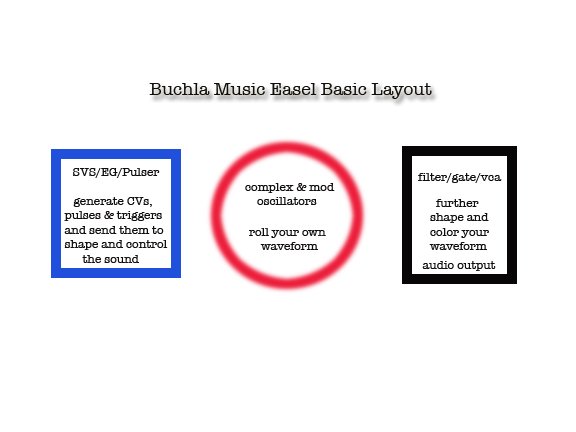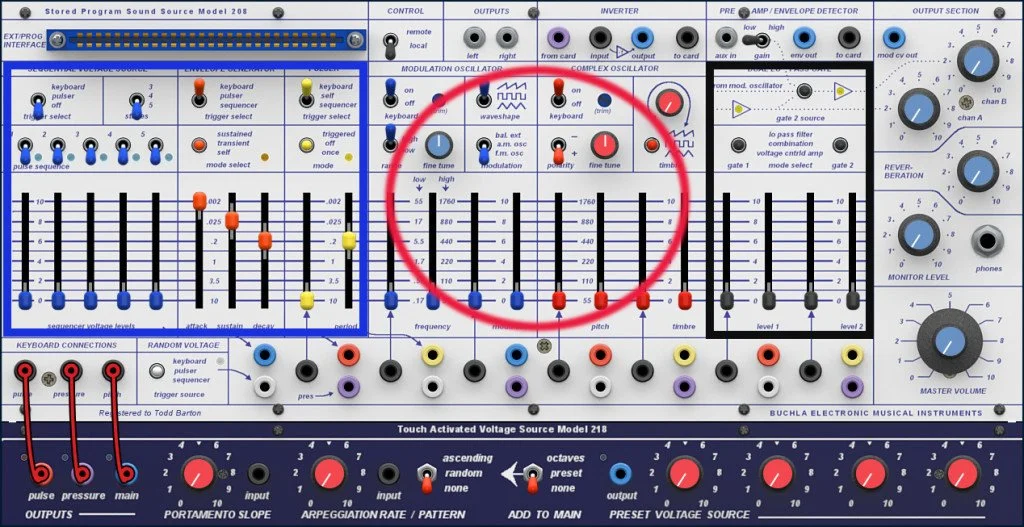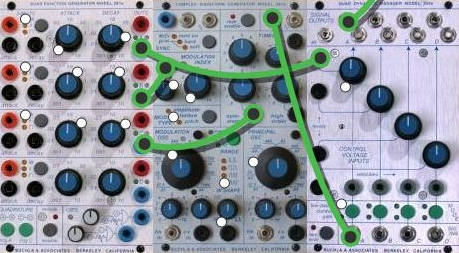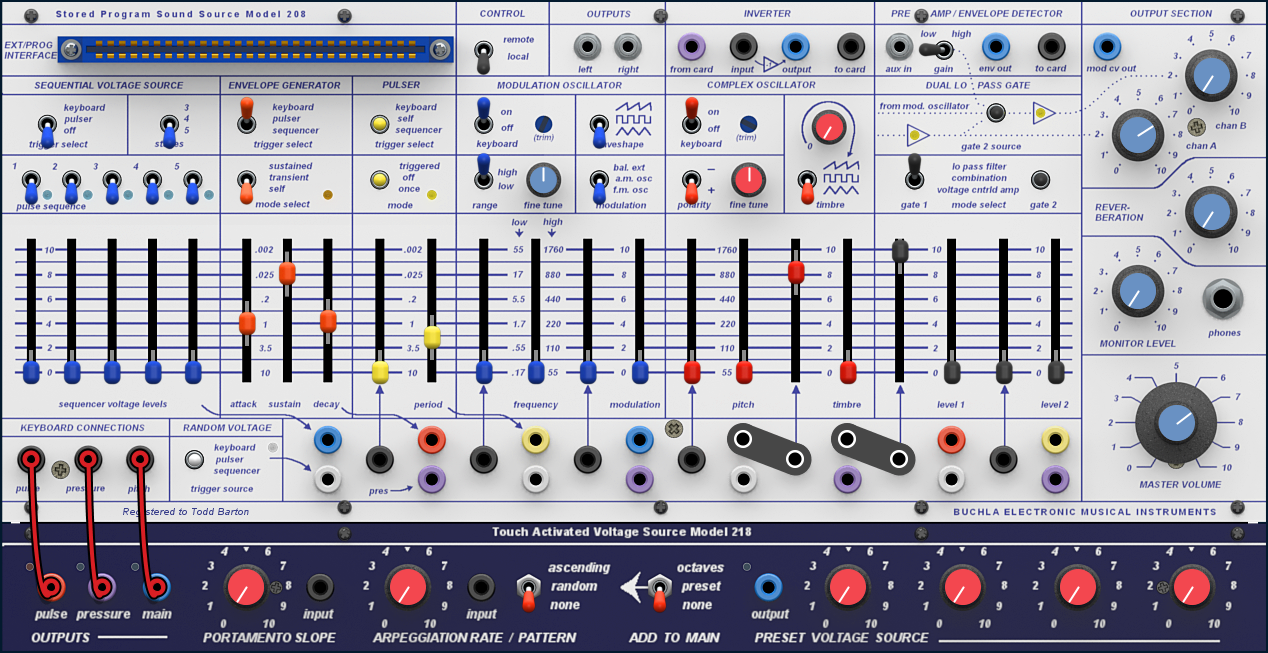Buchla Architecture
I’ll be expanding on concepts from my first post so you may want to take a moment and check it out. Be sure to download the video.
One architectural difference between a Buchla module and all other synthesizer formats is that the Buchla Paradigm separates Audio Signals (carried by tini-jax cables) and Control Voltages/Pulse/Triggers (carried by banana cables).
The acoustical musician in me totally gets this!
As a trumpet player I see that the basic raw sound is created by a continuous airstream vibrating my lips (the audio signal path) which is then modified by the tongue, mouth, tubing, valves and bell (the control voltages/pulses/triggers).
Hubert Howe explained this more technically in his Buchla 100 User’s Guide from the 1960:
“Audio Signals are simply sounds. They may be generated internally by various modules such as oscillators or harmonic generators, or they may come from external sources such as a tape recorder or microphone.
Audio signals may be processed by further devices in the system, such as filters,
frequency shifters, reverberation units, etc.”
Later he writes:
“…modules which generate audio signals are referred to as performance modules, for the actual sounds they produce must be determined by the composer (who chose the setting on the dials) or by control voltages determined by compositional modules. Modules which generate or process control voltages or timing pulses are referred to as compositional modules, for they can be used to determine various aspects of a piece of music such as pitch, amplitude, or duration of a sequence of notes.”
Should you want to read more you can download a .pdf of the Buchla 100 User’s Guide here
A more technical explanation of the advantages of separating audio signals form control voltages can be found via this thread at Muffwiggler.com or this thread
To recap, the Buchlidian Paradigm is about using Control Voltage to give expression, dimension, gesture and meaning to an Audio Signal.
Of course, that statement is true of the Standard Model, but in my mind the difference is the Standard Model encourages linear thinking (VCO-VCF-VCA) in contrast to the non-linear, “all-at-onceness” thinking of Buchla (create your own waveform with knobs or CVs and while you’re at sweep its harmonics and filter & gate it simultaneously).
However, and this is a second difference, I tend to see the Buchlidian Paradigm more as a central circle (Complex Waveform Generator) with a constellation of CVs hovering about eager to play.
In fact, let’s look at the “big view” layout of the Music Easel:
In simple, reductive graphical terms the main Easel components (208 module) are Articulators/Shapers – Oscillators – Filter/Gate/Amplifier:
More specifically:
The other morning I realized that the layout flow is not unlike an Acoustical Instrument signal flow which is, in the case of the trumpet for instance, Tongue-Lips-Trumpet:
This might be a clue to the process of creating a sonic gesture in the Buchla world. Think of the Oscillator as the core or heart and begin by shaping the sound there, i.e. not trying to take the sound to filters and effects units yet.
Look at all the Control Voltage possibility for sculpting the sound first: using the EG or Pulser in the Easel or the 281e in the 200e system you can immediately send CVs to the Timbre section either in a static or dynamic way. The same or other CVs can got to Modulation Index and yet other CVs to Pitch. Imagine these connection with just the 261e that we looked at and heard in the video from my first blog post.
Simple self-triggered 200e patch
Here’s that basic patch in a small 200e system. Remember that 200e systems have memory so that upon boot up the knob setting need to be cleared (turn back and forth once) before setting them to the desired position. And, the knob settings will dramatically alter this basic patch. Should you venture to create this patch enjoy the expedition and note the different places you go before arriving at these exact settings. Please note that the 3 sections of the 281e should be in cycle mode, i.e.the top most position orange light lit. Enjoy! Oh, and the patch layout is courtesy of modulargrid.net
And here is a similar patch in Easel-ese:
Similar patch to the previous 200e patch
Note that both the EG and Pulser are in self-trigger mode. This patch sheet is courtesy of RichyHo’s Easel Notator app which will be released soon!
Thanks for reading! Stay tuned for more meanderings in the Buchlidan Paradigm!
And here is my first Easel Expedition:
Easel Expedition I – Varied Articulations
When faced with an undifferentiated sequence, one that is pounding out a motor-like rhythm, the quickest way to give it definition, nuance and inflection is by creating an accent pattern. That can often be as simple as an interesting volume pattern: loud vs. soft, a filter pattern or a modulation pattern. Or, in today’s Easel Expedition, I’m going to be looking at a pattern of long vs. short notes by controlling the decay of the Pulser via the Sequential Voltage Source. Though the sound I made is nothing special, I draw your attention to the many permutations possible with just 4 sliders of the SVS.
Here’s the video:
Until next time!




